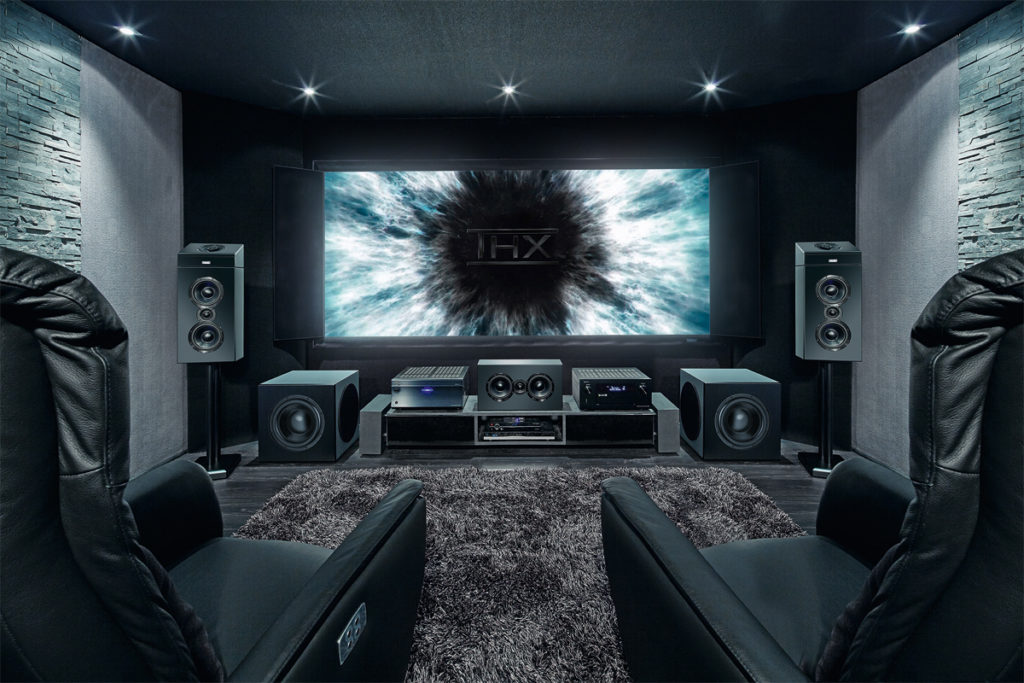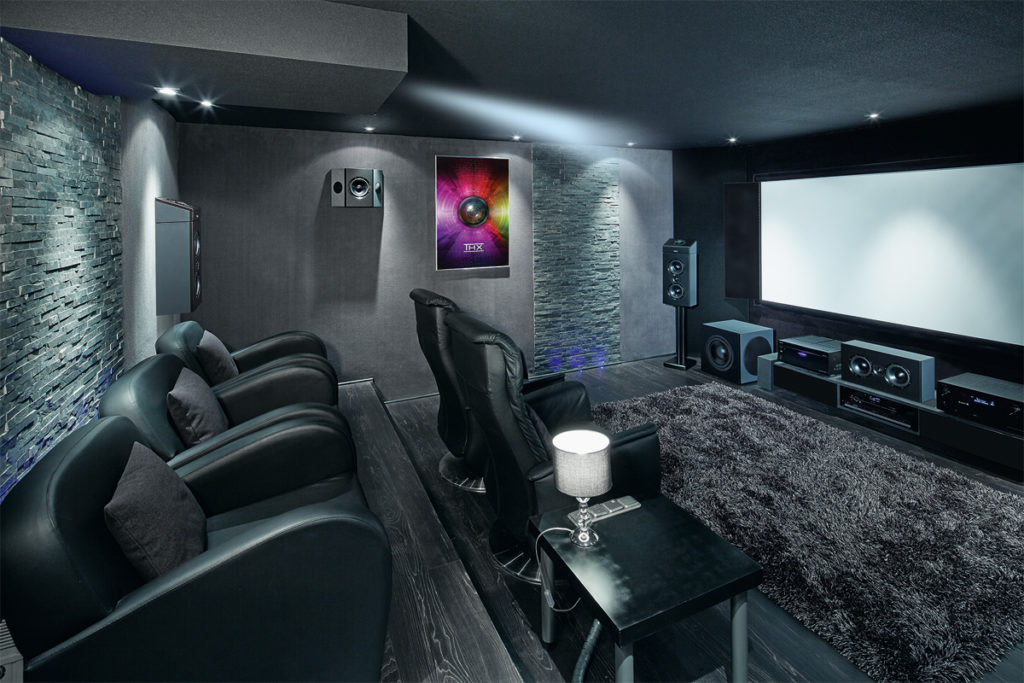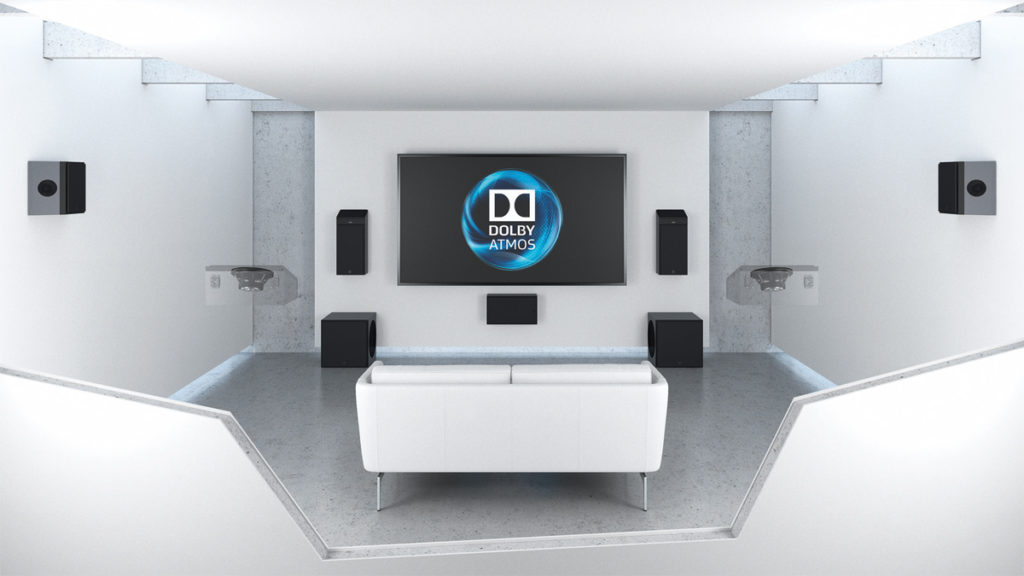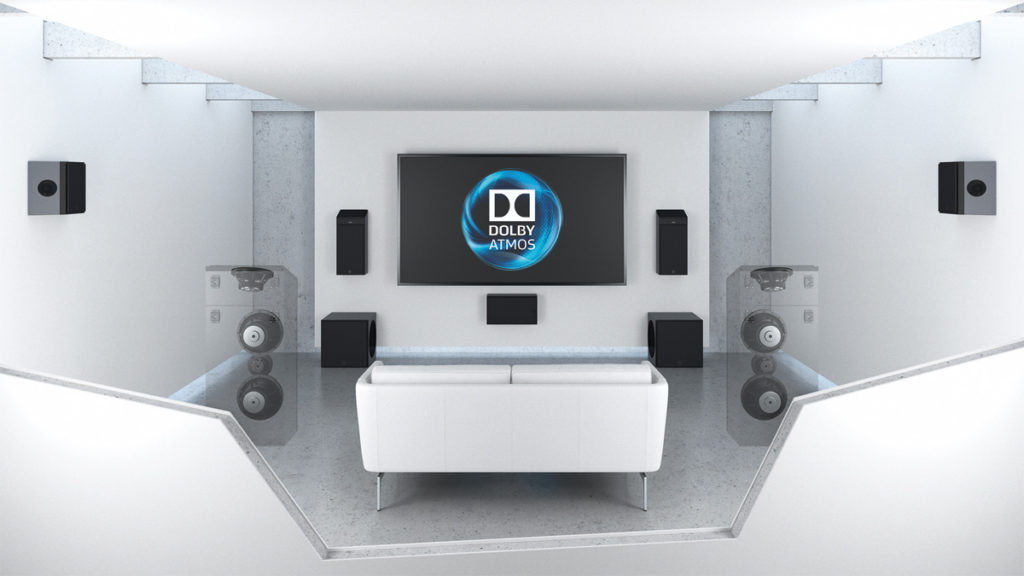Dolby Atmos: The home cinema revolution with Magnat Cinema Ultra
Dolby Atmos is one of the hottest topics when it comes to surround sound and is to be found in a growing number of home cinemas. Aficionados and professionals alike claim that this new object-based standard will revolutionize surround sound – and they are right: For the first time, Dolby Atmos enables the free and precise placement of speech, effects and background sounds. This guarantees an even more immersive home cinema experience with audio technicians using only a mere fraction of the 128 audio tracks available today. Only the hardware (and of course a source medium with Dolby Atmos tracks) is mandatory: The AV receiver needs to support the new standard and the surround system must be upgraded with additional speakers for the high channels. The perfect example how to do this – both optically and acoustically – is the Magnat Cinema Ultra AEH 400-ATM speaker: This compact Atmos module featuring a special coaxial driver is suitable for wall and ceiling mounting alike. Alternatively it can be simply placed on top of the existing Cinema Ultra front speakers to provide finest Dolby Atmos sound by utilising reflections from the ceiling.

For many movie-fanatics it must have felt like a ground-breaking invention, comparable to that of the wheel: Experiencing surround sound in their own homes has been a dream come true for millions of people all around the globe. At first there was quadrophonic sound – almost forgotten today –, then came 5.1, 7.2 or even larger home cinema systems. And since a few years, an even more sophisticated standard is conquering the living rooms and home cinemas: Dolby Atmos. There are, however, a lot of buzzwords in forums and expert discussions: “object-based”, “128 audio tracks” and quite often “revolutionary”. But what does this mean in practice for home cinema installations?
Object-based sound design for maximum immersion
The huge difference between standard home cinema and Dolby Atmos is indeed the object-based placement of basically any sound. That means that the audio engineer does not apply the different audio tracks to single channels any more (e.g. left front speaker). Instead they place sounds, background effects, speech and the like freely in the room. The advanced Dolby Atmos chipset then automatically calculates the data it needs to provide to the speakers – always taking into account the specific shape and condition of the room. This is the huge difference compared to the channel-based audio mixing which has been the standard now for many years.
5.1 vs. 7.2.4: And the winner is… Dolby Atmos
To make sure it does not get to easy when it comes to differentiating the two standards, the system after which Dolby home cinemas are classified stays the same: Instead of a 5.1 setup (consisting of 5 effect speakers and one subwoofer) we now have a 5.1.4 system, for example. In this case, the setup would consist of 5 effects speakers, one subwoofer and 4 additional Atmos speakers. Besides all technical details, experts specifically agree in one point: The extended surround sound experience that Dolby Atmos provides is a revolution in the home cinema segment and guarantees an even stronger immersion than before.

So what is needed for a Dolby Atmos home cinema?
Basically, a combination of three different things is necessary to bring Dolby Atmos into the home cinema:
1.A source medium with a Dolby Atmos audio mix. Today, this can mostly be found on Blu-rays and 4K UHD Blu-ray discs. However, some streaming services are already upgrading their technology. For the future it is very likely that movies and series from these online services will be broadcasted in the new format. Good to know: Dolby Atmos is downwards compatible. If an Atmos source medium is played on a “classic” 5.1 system, it works perfectly as well – just the beautiful new audio effects cannot be heard.
2.The source media has to be decoded by an AV receiver which will then distribute the audio information to the single speakers. Customers who buy a home cinema receiver today can be quite sure that Dolby Atmos is included. Some companies have been selling Atmos models for more than two years now or provide firmware updates for older models to grant them Dolby Atmos compatibility.
3.The connected speaker system has to be capable of Dolby Atmos as well. That does not mean that there are specific demands towards the speakers themselves, it is about their number and placement. Concerning the effect speakers, there is no change: One centre speaker as well as two front speakers and two dipole or direct rear speakers are the minimum requirements. Most systems will benefit greatly from an additional subwoofer for the deep frequencies. For a Dolby Atmos home cinema, additional height speakers are required, mounted underneath the ceiling or on the walls to place sound effects directly above the listeners if needed. Those who don’t want to mount speakers to the ceiling for aesthetical or practical reasons can still enjoy Dolby Atmos: Most manufacturers offer speakers which can be placed in a lower position. Those models will then use reflections from the ceiling to create the Atmos sound.

3.The connected speaker system has to be capable of Dolby Atmos as well. That does not mean that there are specific demands towards the speakers themselves, it is about their number and placement. Concerning the effect speakers, there is no change: One centre speaker as well as two front speakers and two dipole or direct rear speakers are the minimum requirements. Most systems will benefit greatly from an additional subwoofer for the deep frequencies. For a Dolby Atmos home cinema, additional height speakers are required, mounted underneath the ceiling or on the walls to place sound effects directly above the listeners if needed. Those who don’t want to mount speakers to the ceiling for aesthetical or practical reasons can still enjoy Dolby Atmos: Most manufacturers offer speakers which can be placed in a lower position. Those models will then use reflections from the ceiling to create the Atmos sound.

A great example how to upgrade to Dolby Atmos comes from the home cinema experts at Magnat: Their award-winning Cinema Ultra system has been setting impressive benchmarks for years now when it comes to home cinema. Customers who want to equip their new or existing system with Dolby Atmos can do so with an ingenious upgrade: The compact speaker Cinema Ultra AEH 400-ATM has been tailored to perfectly fit the direct speakers Cinema Ultra LCR 100 THX – optically, acoustically and concerning its size. As the direct speakers are the only in the world to receive the renowned THX Ultra 2 certification for landscape and vertical mode alike, the smaller AEH 400 ATM speakers can be placed directly on top of them. Their special developed coaxial driver then provides the impressive Atmos audio experience via reflections from the ceiling. Those who want to mount the Atmos speakers to the ceiling or wall can do so as well: Magnat has included a second frequency switch for direct mode. This allows for upgrading even existing Cinema Ultra setups to Dolby Atmos quickly.
0 Comments